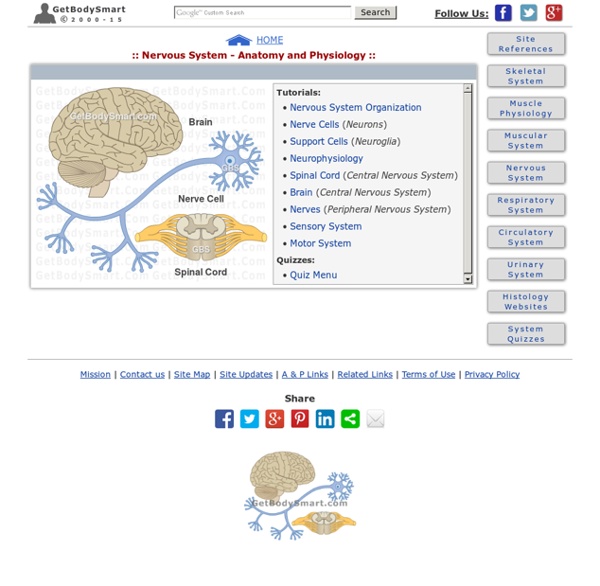



Digital Anatomist Interactive Atlases Structural Informatics GroupDepartment of Biological StructureUniversity of Washington Seattle, Washington, USA Atlases Content: 2-D and 3-D views of the brain from cadaver sections, MRI scans, and computer reconstructions.Author: John W. SundstenInstitution: Digital Anatomist Project, Dept. Biological Structure, University of Washington, Seattle. Content: Neuroanatomy Interactive Syllabus. Atlas was formerly available on CD-ROM (JAVA program running on Mac and PC platform). Content: 3-D views of thoracic organs reconstructed from 1 mm cryosections of a cadaver specimen provided by Wolfgang Rauschning.Authors: David M. Atlas was formerly available on CD-ROM. Content: 2-D and 3-D views of the knee from cadaver sections, MRI scans, and computer recontructions.Author: Peter Ratiu and Cornelius RosseInstitution: Digital Anatomist Project, Dept. FAQHelp on Program UseSoftware Credits and CopyrightPrivacy and advertising policiesAbout the Structural Informatics Group
6 Virtual Tours Of The Human Body For Free Interactive Anatomy Lessons When it comes to interactive virtual views, we have gone to space and around the globe. So, it’s not surprising that we are also going within ourselves on a virtual journey of the human body. One of the finest tools available online is Visible Body. Unfortunately, it’s not free anymore. But you can see the beauty of it thanks to the free demo that allows you to explore the head and neck. If you are disappointed that there aren’t any free interactive anatomy tools, worry not. Google Body You can trust Google to take you everywhere. The Google Body browser is a Google Labs project that renders on Google Chrome and any other browser that supports WebGL (like Firefox 4 Beta). MEDtropolis The interactive website aims to educate entertain both kids and adult on bodily health; understanding the human anatomical structure is just part of the process. For instance, check out the narrated tours on Virtual Body. eSkeletons eSkeletons isn’t only about understanding human anatomy. DirectAnatomy
Brain Atlas - Introduction The central nervous system (CNS) consists of the brain and the spinal cord, immersed in the cerebrospinal fluid (CSF). Weighing about 3 pounds (1.4 kilograms), the brain consists of three main structures: the cerebrum, the cerebellum and the brainstem. Cerebrum - divided into two hemispheres (left and right), each consists of four lobes (frontal, parietal, occipital and temporal). The outer layer of the brain is known as the cerebral cortex or the ‘grey matter’. It covers the nuclei deep within the cerebral hemisphere e.g. the basal ganglia; the structure called the thalamus, and the ‘white matter’, which consists mostly of myelinated axons. – closely packed neuron cell bodies form the grey matter of the brain. Cerebellum – responsible for psychomotor function, the cerebellum co-ordinates sensory input from the inner ear and the muscles to provide accurate control of position and movement. Basal Ganglia Thalamus and Hypothalamus Ventricles Limbic System Reticular Activating System Neurons Glia
Master Muscle List Home Page bodies-in-motion - scott-eaton.com 30 second sequences from BiM Not long ago, I had twelve artists from Natural Motion (of Morpheme and Clumsy Ninja fame) into Somerset House, my home away from home, for a four day anatomy workshop. At the end of each day we would take about 20 minutes to draw from the Bodies in Motion library. sketching from BiM We made extensive use of the timer for gesture drawing. timelapse of a sequence of 30 second poses Body proportions While there is significant variation in anatomical proportions between people, there are many references to body proportions that are intended to be canonical, either in art, measurement, or medicine. Similarly, in art, body proportions are the study of relation of human or animal body parts to each other and to the whole. These ratios are used in veristic depictions of the figure, and also become part of an aesthetic canon within a culture. Basics of human proportions[edit] Human proportions marked out in an illustration from a 20th century anatomy text-book. Different proportions in different people. It is important in figure drawing to draw the human figure in proportion. The proportions used in figure drawing are:[citation needed] Western ideal[edit] Leg-to-body ratio[edit] Another study using British and American participants, found "mid-ranging" leg-to-body ratios to be most ideal.[8] Muscle men and thin women[edit] Japanese ideal[edit] Leonardo da Vinci[edit] Additional images[edit]
All Stomach Muscles Anatomy And Abdominal Muscles Exercises Crimando's Skeleton Tutorials [ Crimando's HomePage | GateWay HomePage | Legal Disclaimer ] Last Modified: January, 2008 (J. Crimando). Skeleton Tutorials Practice identifying anatomical structures of the skeletal system. Choose the bones you want to explore. [ BIO201 Lecture | BIO201 Study Q's | BIO201 Assignments | Syllabi | BIO202 Lecture | BIO202 Study Q's | BIO202 Assignments ][ Human Biodyssey Home | Cool A&P Tutorials | Writing Essays | Science ToolBox | Surviving College | Prof Email | Feedback ] | GateWay's Library | GateWay's HomePage | Maricopa Home ] Created and copyrighted © J.